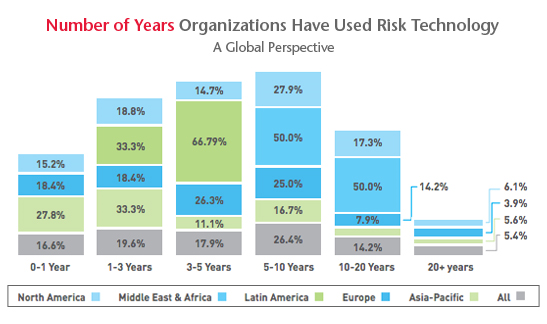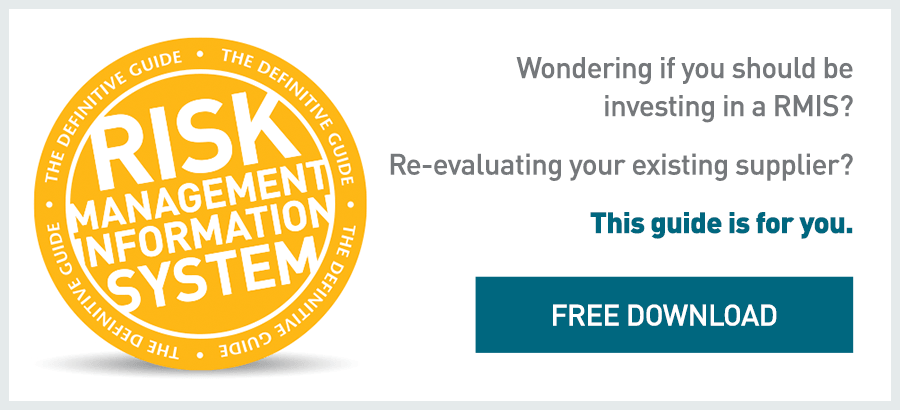Risk Management Information Systems have been around for more than 40 years, yet according to Aons Global Risk Technology Survey, the majority of organizations have only really been benefiting from them for less than 10 years. So why now?

Risk Management Information Systems are back on the priority list for many organizations for these key reasons:
- Increased focus on risk management from the board: Risk management has moved up the corporate agenda to become a board-level concern. The pressure to produce timely reports, which show a true picture of risks and exposures, is more intense than ever. Yet, risk managers struggle to deliver the goods, with data tied up in disparate, manually based systems that are hard to pull together.
- Compliance, the economy and increased occurrence of natural catastrophes: We live in a more litigious age where governance and regulations are more intense. Incident rates are also on the rise in the face of more natural catastrophes and a growing population. Furthermore, an unsteady economy magnifies the cost of mistakes.
- More data being managed and analyzed by fewer staff: Whatever volumes of risk and insurance data your business produces, a risk management system keeps them under control. You can merge, analyze and share information about insurance, risks, where your assets and employees are based around the world, and events that may impact them.
- Brand reputation: Nowadays, complex global supply chains and an internet-spawned 24-hour news cycle fueled by social media have posed additional challenges for companies to manage risks related to their reputation and brand. While some consider damage to reputation a risk in its own right, others may consider it as a consequence of other risks. Either way, it is clear that all risks may impact or be impacted by damage to reputation.
- Expanding responsibilities of todays risk manager: The professional risk managers role has expanded from assistant to the corporate treasurer back in the 1960s, to include business continuity, compliance, corporate governance, auditing and so on today. The extra responsibilities put pressure on the risk manager, which means he or she is turning to technology as a facilitator, to help speed up processes and aid decision making.
Still wondering what a RMIS Software can do for your organization?
Download the free Definitive Guide to a Risk Management Information System to understand what risk management software can do for your company.









